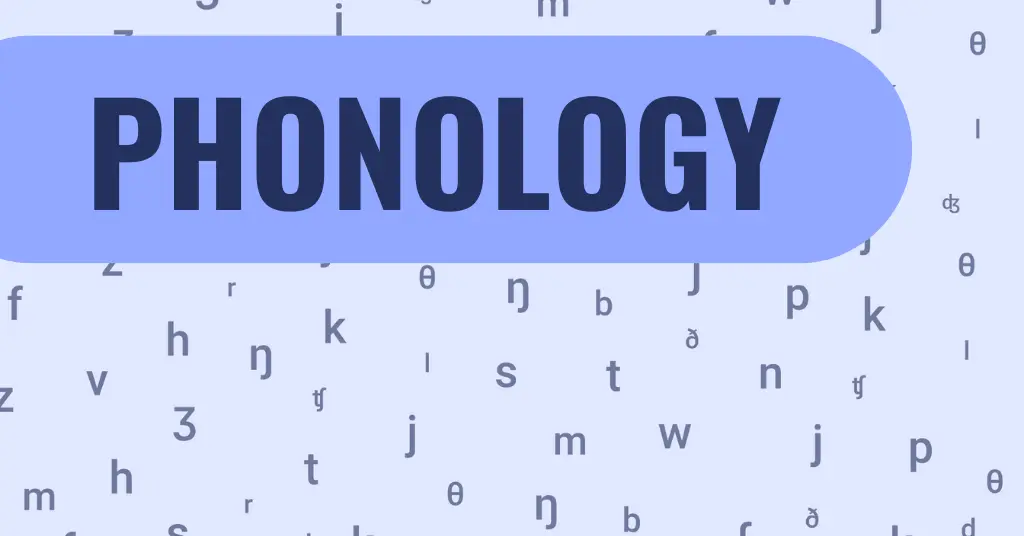Phonology
Phonology is a fascinating field of linguistics that deals with the systematic organization of sounds in spoken languages. It investigates how sounds function in a language, their patterns, and the rules that govern their combinations. Phonology enables us to understand how sounds contribute to the formation and perception of words, phrases, and sentences. In this article, we will delve into the world of phonology, discussing its history, basic concepts, and applications. By the end of this article, you will have a strong foundation in phonology and an appreciation for the intricate sound systems that underlie all human languages.

History of Phonology
The study of phonology dates back to ancient times, when scholars began to analyze the sound systems of various languages. The ancient Indian grammarian Pāṇini is considered one of the pioneers of phonology. His work, Ashtadhyayi, which was written around the 4th century BCE, laid the foundation for the study of Sanskrit phonology [1].
In the West, the Greek philosopher and linguist Dionysius Thrax (170-90 BCE) also made significant contributions to the study of phonology. His work, Art of Grammar, described the sound system of Greek and introduced the concept of the phoneme [2].
The modern study of phonology emerged in the early 20th century, influenced by the work of the Prague School, a group of linguists led by Nikolai Trubetzkoy and Roman Jakobson. They developed the concept of distinctive features, which are the minimal units of sound that can distinguish one word from another [3].
Basic Concepts in Phonology
- Phonemes: A phoneme is the smallest unit of sound in a language that can distinguish one word from another. For example, in English, the sounds /p/ and /b/ are phonemes because they can differentiate words like “pat” and “bat” [4].
- Allophones: Allophones are the different ways a phoneme can be pronounced. They are variations of a phoneme that do not change the meaning of a word. For example, in English, the /p/ in “pat” and “spin” are allophones, as they are slightly different in pronunciation but do not change the meaning of the word [5].
- Syllables: A syllable is a unit of sound that consists of a nucleus (usually a vowel) and optional consonants before or after the nucleus. For example, the word “phonology” has four syllables: /pho·no·lo·gy/ [6].
- Distinctive Features: Distinctive features are the smallest units of sound that can differentiate one phoneme from another. These features can be related to the place of articulation (where the sound is produced), the manner of articulation (how the sound is produced), and voicing (whether the vocal cords vibrate during the production of the sound). For example, the English phonemes /p/ and /b/ differ in their voicing feature, with /p/ being voiceless and /b/ being voiced [7].
- Phonological Rules: Phonological rules are the systematic patterns that govern the way sounds are combined and modified in a language. They can be assimilation (when a sound becomes more like a neighboring sound), dissimilation (when a sound becomes less like a neighboring sound), deletion (when a sound is removed), or insertion (when a sound is added). For example, in English, the plural morpheme is pronounced as /s/ after voiceless consonants (e.g., “cats”), as /z/ after voiced consonants (e.g., “dogs”), and as /ɪz/ after sibilants (e.g., “buses”) (Yip, 2002).
Applications of Phonology
- Language Teaching and Learning: Phonology plays a crucial role in the teaching and learning of foreign languages. A thorough understanding of the phonological system of a target language can help learners improve their pronunciation, listening comprehension, and overall communicative competence. Language teachers can use phonological analyses to design effective teaching materials and strategies that address the specific needs of their students [8].
- Speech Therapy: Phonological knowledge is essential for speech therapists, who work with individuals with speech and language disorders. By understanding the sound patterns and rules of a language, therapists can develop targeted interventions to help clients improve their speech production and perception abilities [9].
- Computational Linguistics: Phonology is also relevant in the field of computational linguistics, which involves the development of algorithms and software for processing and analyzing natural language. Applications such as speech recognition systems, text-to-speech synthesis, and natural language processing rely on phonological information to function effectively [10].
Conclusion
Phonology is a fascinating and essential aspect of human language that deals with the systematic organization and rules of sounds. By understanding phonological concepts such as phonemes, allophones, syllables, distinctive features, and phonological rules, we can better appreciate the complexity and beauty of the world’s languages. This knowledge has practical applications in various fields, including language teaching and learning, speech therapy, and computational linguistics.
As we continue to explore and research phonology, we deepen our understanding of the intricate sound systems that form the basis of human communication. Phonology not only enriches our knowledge of languages but also allows us to develop more effective strategies and tools to address language-related challenges. Through the study of phonology, we gain valuable insights into the remarkable capacity of human beings to create, perceive, and manipulate sounds in meaningful ways.
In conclusion, phonology is an essential field of linguistics that offers valuable insights into the organization and rules governing the sounds of human languages. As we explore phonology, we not only deepen our understanding of the rich diversity of languages but also develop more effective tools and strategies for language teaching, learning, and therapy. The study of phonology allows us to appreciate the remarkable human capacity for creating, perceiving, and manipulating sounds in our daily lives.
Sources
[1] Cardona, G. (1997). Pāṇini: A Survey of Research. Motilal Banarsidass Publishers.
[2] Robins, R. H. (1951). Dionysius Thrax and the Technê Grammatikê. Museum Philologum Londiniense, 2, 1-16.
[3] Jakobson, R., Fant, G., & Halle, M. (1951). Preliminaries to Speech Analysis: The Distinctive Features and their Correlates. MIT Press.
[4] Ladefoged, P., & Maddieson, I. (1996). The Sounds of the World’s Languages. Blackwell Publishers.
[5] Kenstowicz, M. (1994). Phonology in Generative Grammar. Blackwell Publishers.
[6] Blevins, J. (1995). The Syllable in Phonological Theory. In J. A. Goldsmith (Ed.), The Handbook of Phonological Theory (pp. 206-244). Blackwell Publishers.
[7] Jakobson, R., Fant, G., & Halle, M. (1951). Preliminaries to Speech Analysis: The Distinctive Features and their Correlates. MIT Press. Yip, M. (2002). Tone. Cambridge University Press.
[8] Celce-Murcia, M., Brinton, D. M., & Goodwin, J. M. (1996). Teaching Pronunciation: A Reference for Teachers of English to Speakers of Other Languages. Cambridge University Press.
[9] Shriberg, L. D., & Kwiatkowski, J. (1982). Phonological Disorders III: A Procedure for Assessing Severity of Involvement. Journal of Speech and Hearing Disorders, 47, 256-270.
[10] Cole, R., Hirschman, L., & Zue, V. (Eds.). (1995). Survey of the State of the Art in Human Language Technology. Cambridge University Press.



